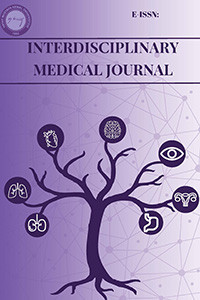Determination of 25 hydroxyvitamin D reference ranges in Hatay region by indirect method
Determination of 25 hydroxyvitamin D reference ranges in Hatay region by indirect method
Vitamin D Vitamin D Deficiency, Laboratory Tests,
___
- Cashman KD. Vitamin D Deficiency: Defining, Prevalence, Causes, and Strategjes of Addressing. Calcif Tissue Int. 2020 Jan;106(1):1 4-29. doi: 10.1007/s00223-0l9-00559-4. Epub 2019 May 8.
- Sempos CT, Heijboer AC, Bikle DD, Bollerslev J, Bouillon R, Brannon PM, DeLuca HF, Jones G, Munns CF, Bilezikian JP, Giustina A, Binkley N. Vitamin D assays and the definition of hypovitaminosis D: results from the First International Conference on Controversies in Vitamin D. Br J Clin Pharmacol. 2018 Oct;84(10):2194-2207. doi: 10.1111 /bcp.13652. Epub 2018 Jul 17.
- Börekçi NÖ. Current infonnation on vitamin D deficiency. Jour Tuk Fam Phy 2019;10(1):35-42. doi:10.15511 /jtfp.19.00135
- Amrein K, Scherkl M, Hoffmann M, Neuwersch-Sommeregger S, Kostenberger M, Tmava Berisha A, Martucci G, Pilz S, Malle O. Vitamin D deficiency 2.0: an update on the current status worldwide. Eur J Clin Nutr. 2020 Nov;74(11): 1498-1513. doi: 10.1038/s41430-020- 0558-y. Epub 2020 Jan 20. PMID: 31959942;
- CLSI. Defining, Establishing, and Verifying Reference Intervals in the Clinical Laboratory; Approved Guideline-Third Edition. CLSI Document C28-A3. Wayne, PA, USA: Clinical and Laboratory Standards Institute; 2008.
- Çaycı T, Kurt YG, Honca T, Taş A, Özgürtaş T, Ağıllı M, Aydn FN, Aydın İ. Hastane bilgi sistemindeki kayıtlı hasta sonuçlarından tam kan referans aralıklarının tayini. Gülhane Tıp Derg 2015; 57: I 11-117. doi: 10.5455/gulhane. 167492
- Aydın İ, Ağıllı M, Aydın FN, Kurt YG, Çaycı T, Taş A, Honca T, Özgürtaş T, Türker Türker, Koçak N. Farklı yaş gruplarında nötrofil/lenfosit oranı referans aralıkları. Gülhane Tıp Derg 2015;57: 414-418. doi: 10.5455/gulhane. 166398
- Çatak Z. Elazığ Bolgesinin 25 Hidroksivitamin D Düzeylerinin Değerlendirilmesi ve Populasyona Dayalı Yeni Referans Aralıklarının Belirlenmesi. Fırat Tıp Dergisi/Firat Med J 2018; 23 (1): 6-10.
- Alpdemir M, Alpdemir MF. Determination of reference range with the indirect method of the 25- hydroxyvitamin D3 test in the Balıkesir region, Turkey. Turk J Med Sci (2016)46 :1 512 -1517. doi: 10 .3906/sag-1504-19.
- Solberg HE. International Federation of Clinical Chemistry (JFCC), Scientific Committee, Clinical Section, Expert Panel on Theory of Reference Values, and International Committee for Standardization in Haematology (JCSH), Standing Committee on Reference Values. Approved recommendation (1986) on the theory of reference values. Part 1. The concept of reference values. J Clin Chem Clin Biochem 1987; 25: 337-342.
- Öztürk ZA, Gol M, Türkbeyler İH. Prevalence of vitamin D deficiency in otherwise healthy individuals between the ages of 18 and 90 years in southeast Turkey. Wien Klin Wochenschr. 2017 Nov;129(21-22):854-855doi: 10.1007/s00508-017-1241-8. Epub 2017 Jul 27.
- Buyukuslu N, Esin K, Hizli H, Sunal N, Yigit P, Garipagaoglu M. Clothing preference affects vitamin D status of young women. Nutr Res 2014;34:688-93.
- Bozkurt S, Alkan BM, Yildiz F, Gumus S, Sezer N, Ardicoglu O, et al. Age, sex, and seasonal variations in the serum vitamin D3 Levels in a local Turkish population. Arch Rheumatol 2014;29:14- 9.
- Alpdemir M, Alpdemir MF. Vitamin D deficiency status in Turkey: A meta-analysis. Int J Med Biochem 2019;2(3):118-31. DOI: 10.14744/ijmb.2019.04127.
- Matyar S, Disel NR, Acikalin Akpinar A, Kutnu M, İnal T. Vitamin D levels in Çukurova Region. [Article in Turkish]. Cukurova Med J 2017;42:320-8.
- Serdar MA, Can BB, Kilercik M, Zeynep A, Durer ZA, Aksungar FB, et al. Analysis of changes in parathyroid hormone and 25 (OH) vitamin D levels with respect to age, gender and season: A Data Mining Study. J Med Biochem 201 7;36:73-83
- Durmaz ZH, Demir AD, Tiryaki M, Delibaş N. Vitamine D levels of individulas in Amasya region. Bozok med J 2015;5:26-32.
- Hekimsoy Z, Dinc G, Kafesciler S, Onur E, Guvenc Y, Pala T, et al. Vitamin D status among adults in the Aegean region of Turkey. BMC Public Health 2010;10:782.
- Ucar F, Taslipinar MY, Soydas AO, Ozcan N. 25-OH vitamin D levels in patients admited to Ankara Etlik Ihtisas Training and Research Hospital. Eur J Basic Med Sci 2012;2:12- 5.
- Yayın Aralığı: 3
- Başlangıç: 2023
- Yayıncı: Hatay Mustafa Kemal Üniversitesi Tıp Fakültesi Dekanlığı
Intestinal-type adenocarcinoma of the sinonasal mucosa: a rare case report
Didar GÜRSOY KUZULUK, Süleyman UYSAL, Gül SOYLU ÖZLER
Evaluation of family physicians’ knowledge level, attitudes and behaviours on Asthma, COPD
Ahmet YILDIZ, Celal KUŞ, Raziye Şule GÜMÜŞTAKIM, Mustafa Emre ERYILMAZ
Determination of 25 hydroxyvitamin D reference ranges in Hatay region by indirect method
A case of acalculous cholecystitis or Brucella-induced acute cholecystitis?
Fatma Yekta URKMEZ, Mustafa Serhat ŞAHİNOĞLU, Sevil ALKAN
The approach of society regarding the violence against healthcare providers
Yusuf Gazi UÇAR, Celal KUŞ, Raziye Şule GÜMÜŞTAKIM, Mustafa Emre ERYILMAZ
Local and systemic side effects of the coronanovac vaccine
Ayşe KARAOĞULLARINDAN, Sanem Okşan ERKAN, Birgül TUHANİOĞLU, İlhami YILDIRIM, Asena Ayça ÖZDEMİR
Comparison of efficacy of Ketorolac %0.4 and Dexamethasone %0.1 in inflamed Pterygium and Pinguecula
Kaan ÇAKMAK, Safak KORKMAZ, Funda YILMAZ
